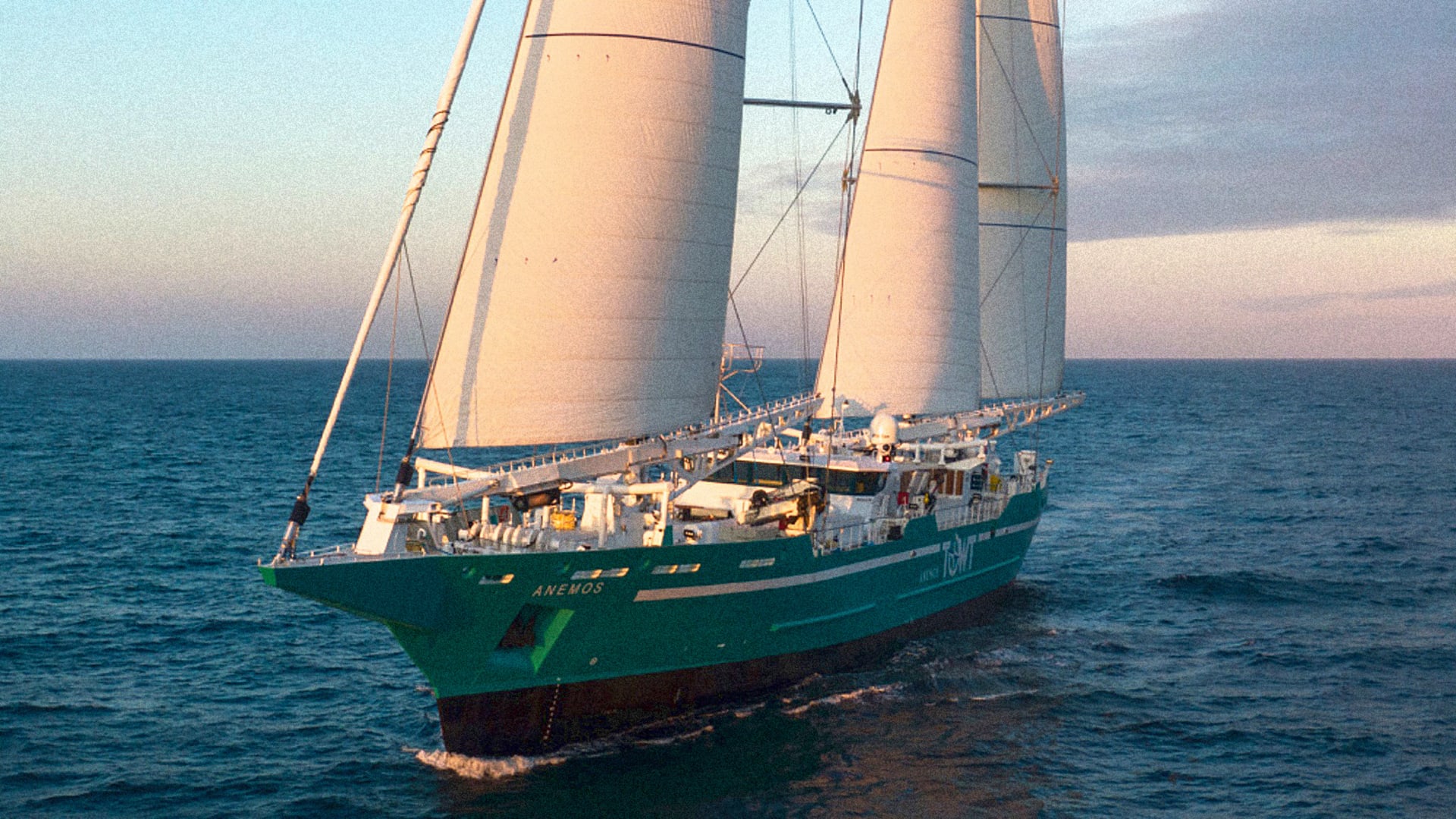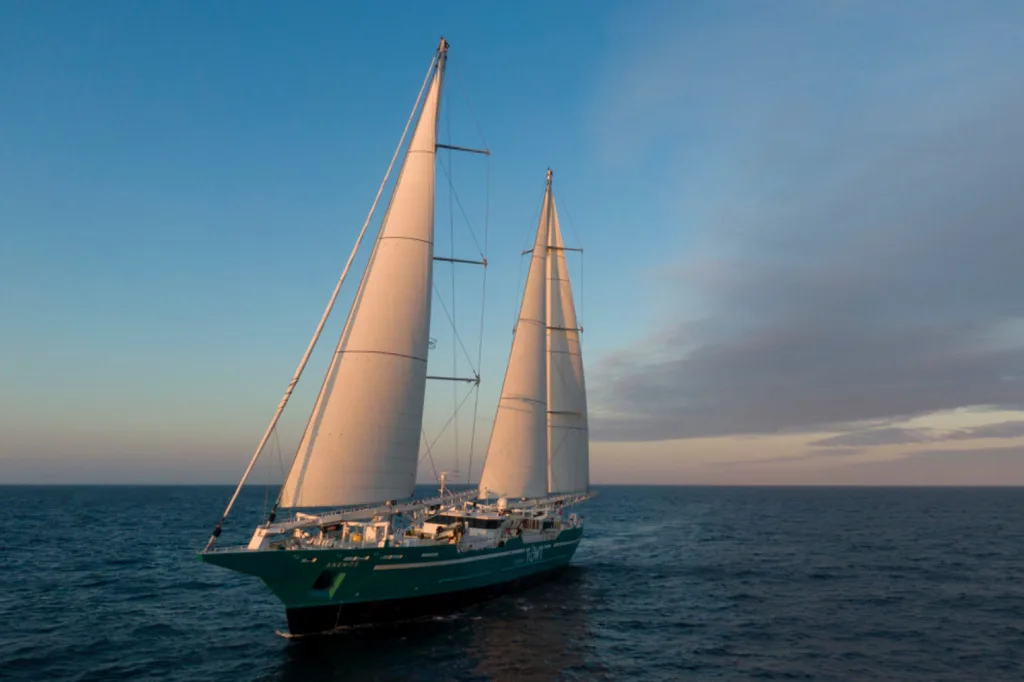Cool!


“We know the wind is abundant, and we’ve known it for centuries,”
Gee really?
As a backup, the ship also has diesel electric engines.
Around 95% of the time, Le Grand says, the ship can rely entirely on sails.
On the first journey, delays meant that the ship missed the best weather window, and it needed to use fuel when it first left France. But the last 10 days of the trip were powered by the sails.
If it left “last month” on the 31st i’d say that’s about 50%, not 95.
Cool idea but humans want that crap plastic useless trinkets tomorrow, not next month. Time will tell…
A ton of things that come by sea doesn’t matter much on time. Think about steel and vehicles and raw goods and all the other stuff that isn’t direct to consumer. A month or so isn’t a big deal in many cases.
The problem is that if my math checks out and what is written in the article is true, then this sail boats capacity is less than 1/4 of a single percent of the bigger fuel powered ships. You’d have to make and sail another 500 just to equal the capacity of 1 normal cargo ship.
" (The capacity of the ship, however, is much smaller than the largest modern container ships, which can hold more than 20,000 shipping containers; Anemos can carry around 1,000 tons of cargo on pallets.)"
Thanks for the crap comparison. Why would you use two different descriptions of cargo capacity that most readers could only vaguely compare?
I looked it up, and for the benefit of everyone else: it seems a fully loaded shipping container can weigh over 30 tons.
In other words, the sailboat can carry about 30 shipping containers worth of cargo. This is a lot less than I initially would have thought. A whole lot less. If the big fossil fuel cargo ships can do 20,000 loaded containers, that would mean the sailboat can only do what could practically be a rounding error. 0.15%
I want to ride that as a passenger.
I’m putting this in the “less caustic” category of VC bro gig/hobby/hustles.
It’s niche, and that niche means it serves the upper class. They at least seem aware and forward about that.
TWOT lmao
deleted by creator
The headline says largest, not first?
It’s also not the largest. During the age of sail one of the largest shipping boat was almost 8 times larger than this one. They are just playing the technicality of being wind powered and not a sail ship to con startup investors out of their money. But there have been even larger sail cruise ships. It’s just the game tech bros play, reinventing the wheel but coming up with a catchy marketing name that looks like disrupting the status quo to bait capital injection.
If someone asks what is the world’s largest reptile, the answer is a saltwater croc and not an ichthyosaur. It doesn’t say largest ever.
Not the komodo?
I googled it right before commenting, I was going to put komodo but turns out the saltwater croc is way bigger.
Here’s from the wiki:
The saltwater crocodile is the largest living reptile.[5] Males can grow up to a weight of 1,000–1,500 kg (2,200–3,300 lb) and a length of 6 m (20 ft), rarely exceeding 6.3 m (21 ft).
Still by that standard, there are larger sail ships today. Just not cargo ships, but cruise ships. It’s still a manipulative statement.
It literally says cargo ship
On 5 November 1910,[2][3] on her 14th outbound voyage, carrying a mixed cargo including a number of pianos for Chile, Preussen was at 23:35 rammed by the small British cross-channel steamer Brighton 8 nautical miles (15 km) south of Newhaven.[4] Contrary to regulations, Brighton had tried to cross her bows, underestimating her high speed of 16 knots (30 km/h). Preussen was seriously damaged and lost much of her forward rigging (bowsprit, fore topgallant mast), making it impossible to steer the ship to safety.
Brighton returned to Newhaven to summon aid and the tug Alert was sent to assist Preussen. A November gale thwarted attempts to sail or tug her to safety in Dover Harbour. It was intended to anchor her off Dover, but both anchor chains broke, and Preussen was driven onto rocks at Crab Bay, where she sank as a result of the damage inflicted on her. While crew, cargo and some equipment could be saved from Preussen, with the keel broken she was rendered unsalvageable. She sits in 6 metres (3.3 fathoms) of water at 51°8.02′N 1°22.17′E. The Master of Brighton was found to be responsible for the accident and lost his licence as a result. A few ribs of Preussen can be seen off Crab Bay at low spring tides.
Wow, that captain messed up big time.
For some reason I also read “first” the first time I looked at the title
it was the first time in nearly a century that a large cargo ship crossed the Atlantic powered almost entirely by the wind.
Not that far off, really
Good thing we have highly trained historians on Lemmy to tell us these things.
Oh wow who would’ve thought?



